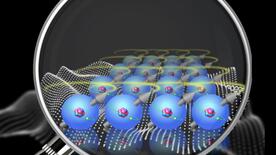In this talk, I’ll describe how we use solid-state spin ensembles, magnetic resonance, and quantum sensing techniques to search for axion dark matter in the third-generation CASPEr-e detector. Discovering and characterizing axion dark matter could resolve the longstanding Strong CP Problem, in addition to revealing the identity of dark matter. The Strong CP Problem stems from the puzzling lack of a CP-violating permanent electric dipole moment (EDM) in nucleons. Searches have ruled out CP-violations to within a few parts in 10-10, requiring either a suspicious degree of fine-tuning or a physical mechanism that allows CP-violation to vanish. If the axion field exists, its dynamics can naturally prevent a permanent EDM in nucleons without requiring fine-tuning of QCD parameters. Axions from the galactic halo would also couple to nucleons, inducing an oscillating EDM which can be detected as a resonant precession of nuclear spins placed in crossed electric and magnetic fields. This is the basis for Cosmic Axion Spin Precession Experiment Electric (CASPEr-e), a nuclear-spin-based axion haloscope. CASPEr-e has the potential to reach the QCD axion band at frequencies of a few MHz, and complements electromagnetic axion haloscopes that search for the axion’s coupling to photons. The third-generation experiment aims to improve sensitivity by using a high quality factor resonant circuit and sensitive SQUID readout to achieve spin-projection-noise (SPN) limited readout of the nuclear spins. Further sensitivity enhancements could be achieved by adopting techniques from quantum optics, including spin squeezing.
Host: Max Silva-Feaver


